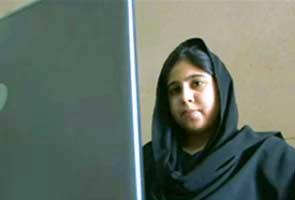
Islamabad, October 23: The Pakistani Taliban have threatened to attack another schoolgirl for exposing their atrocities, the Dawn reported on Monday.
Hina Khan from Swat was on Taliban hit list for publicly criticising their atrocities, the daily said.
Her family has claimed that despite repeated requests for security from the authorities, no protection was provided to them. They relocated to Islamabad a few years ago.
"But now I feel I would not be able to go to school in Islamabad as well after the renewed threats," Hina, a Class 11 student, told the newspaper.
"I am more worried now because after the attack on Malala, a red cross on our door and subsequent threats to my family, has made us more insecure," she said.
According to her father Raitullah Khan: "A few days ago when I came out of my house I saw a red cross on my gate but I removed it assuming it might have been drawn by some kids, but the very next day it appeared again, which really terrified me."
"Next day, we received a call that Hina will be next after Malala," the daily quoted Mr Khan as saying.
Malala Yousafzai was shot in the head by a Taliban gunman in Khyber Pakhtunkhwa province on October 9.
She was on her way home from school when an attacker wearing police uniform stopped the school bus and opened fire at her. She was seriously injured.
She is currently undergoing treatment at the Queen Elizabeth Hospital in Birmingham, Britain.





Comments
Add new comment